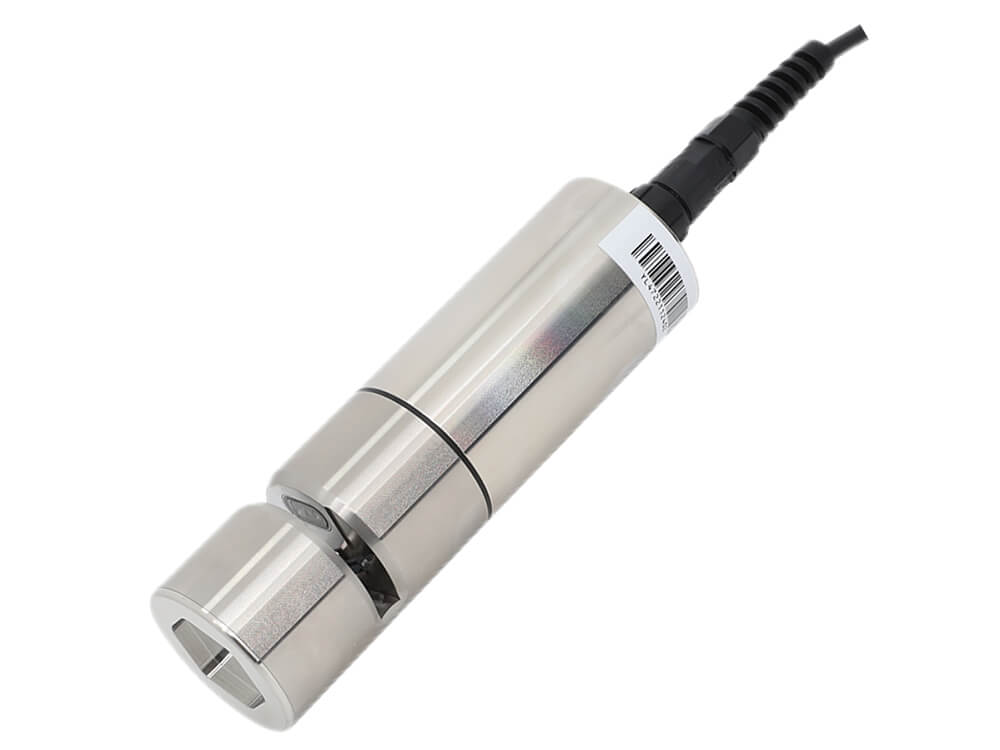The Science Behind COD Sensors: How They Improve Wastewater Treatment Processes

In an era of increased industrialization and rapid urbanization, wastewater management has become one of the most critical challenges facing both industries and municipalities. Wastewater, especially that discharged from industries, can contain a range of pollutants, with organic pollutants being one of the most concerning. These organic materials, when not properly treated, consume oxygen in water bodies, leading to detrimental environmental effects such as hypoxia (low oxygen levels), fish kills, and disruptions to aquatic ecosystems.
One of the most effective ways to monitor and control these organic pollutants is through the use of Chemical Oxygen Demand (COD) sensors. These sensors have become indispensable in ensuring that wastewater treatment processes are functioning properly and that water quality is maintained at safe, regulated levels.
In this blog, we will explore the science behind cod sensor , how they operate, and why they are essential in improving wastewater treatment processes.
What Is Chemical Oxygen Demand (COD)?
To understand the importance of COD sensors, it is crucial to first define Chemical Oxygen Demand (COD). COD is a measure of the amount of oxygen required to chemically oxidize the organic compounds present in a water sample. Organic pollutants like food waste, chemicals, oils, and detergents are common in wastewater and consume oxygen when they break down. High COD levels can indicate the presence of high concentrations of organic pollutants in the water.
The greater the COD value, the more oxygen is needed to break down these pollutants. In a natural water body, such as a river or lake, high COD levels can deplete the dissolved oxygen (DO) that aquatic life needs to survive. This is why it is so important to control the COD in wastewater before it is discharged into these water bodies.
How Do COD Sensors Work?
COD sensors are devices designed to measure the concentration of organic pollutants in wastewater by monitoring the COD levels. These sensors operate using two main types of technologies: electrochemical and optical sensing. Let’s dive into the working principles of both types of sensors.
1. Electrochemical COD Sensors
Electrochemical sensors work by oxidizing organic compounds present in a water sample using an electric current. These sensors typically consist of electrodes that pass electricity through the water sample. The organic substances in the sample undergo oxidation at the electrodes, releasing electrons in the process. The magnitude of the current produced is directly proportional to the concentration of organic material in the water, which correlates with the COD value.
The advantage of electrochemical sensors is their high sensitivity, allowing them to detect even small amounts of organic pollutants. They are often used in systems that require constant monitoring, providing real-time data that can trigger immediate action when necessary.
2. Optical COD Sensors
Optical COD sensors rely on light to measure the organic content in wastewater. The principle behind optical sensors is light absorption. Organic molecules absorb light at specific wavelengths, and the amount of light absorbed can be used to estimate the concentration of organic matter in the sample. The more light that is absorbed, the higher the organic content and, consequently, the higher the COD.
Optical sensors offer the advantage of being non-invasive, meaning they can measure COD levels without directly interacting with the water. This makes them ideal for situations where the water sample cannot be disturbed, or where continuous monitoring is needed.
Why Are COD Sensors Important for Wastewater Treatment?
The role of COD sensors in wastewater treatment cannot be overstated. They provide real-time insights into the organic content of wastewater, enabling operators to optimize their treatment processes. Let’s look at some of the key reasons why these sensors are essential:
1. Real-Time Monitoring
Traditionally, measuring COD involved collecting water samples, sending them to a laboratory, and waiting for analysis. This process could take hours or even days, during which time untreated or inadequately treated wastewater could already be discharged into the environment. This delay can lead to significant environmental damage, especially when high COD levels cause oxygen depletion in water bodies.
COD sensors offer real-time monitoring, allowing operators to track changes in the organic load of wastewater as it occurs. With this continuous flow of data, operators can adjust the treatment process dynamically to ensure that the effluent meets environmental regulations before it is released. Real-time monitoring helps to quickly identify potential problems, preventing the discharge of harmful levels of pollutants.
2. Process Optimization and Cost Reduction
One of the most significant benefits of COD sensors is their ability to optimize wastewater treatment processes. In many conventional systems, the treatment process is often based on fixed protocols, such as consistent chemical dosing or aeration rates. However, these methods are not always efficient, especially when wastewater quality fluctuates.
With real-time data from COD sensors, treatment processes can be adjusted dynamically based on the actual organic load. For example, if COD levels are low, the system can reduce energy-intensive processes like aeration or chemical dosing, resulting in cost savings. On the other hand, when COD levels are high, the system can ramp up treatment, ensuring that organic pollutants are effectively removed.
This dynamic approach to treatment not only enhances the efficiency of the system but also reduces operating costs by minimizing unnecessary energy use, chemical consumption, and overall waste.
3. Regulatory Compliance
Environmental regulations governing wastewater discharge are becoming increasingly stringent as governments and organizations strive to protect water resources and aquatic ecosystems. Many jurisdictions impose COD limits on wastewater effluent to prevent pollution and safeguard water quality.
By continuously monitoring the COD levels in wastewater, COD sensors help industries and municipalities stay compliant with these regulations. If the COD levels exceed acceptable thresholds, operators can quickly adjust the treatment process to reduce organic content and meet the required standards before discharge.
Failing to meet regulatory standards can result in hefty fines, legal liabilities, and significant reputational damage. By using COD sensors, industries can minimize the risk of non-compliance and maintain their commitment to environmental responsibility.
4. Early Detection of Pollutant Surges
Industrial processes are dynamic, and fluctuations in wastewater composition can occur due to changes in production cycles, maintenance activities, or accidental spills. In some cases, these fluctuations can lead to sudden surges in organic load, overwhelming the treatment system and causing ineffective treatment.
COD sensors help identify these surges early, giving operators the chance to intervene before they result in system failures or the release of untreated wastewater. Early detection ensures that the treatment system can adjust quickly to handle the increased load and prevent environmental damage.
5. Enhancing Sustainability
Sustainability is a growing priority for industries, and wastewater treatment plays a key role in achieving this goal. By using COD sensors to optimize their treatment processes, industries can reduce their overall environmental impact. This includes minimizing energy usage, cutting down on the use of chemicals, and reducing water consumption by improving efficiency in treatment systems.
For example, when COD sensors detect that wastewater has low organic content, the system can automatically adjust to use fewer chemicals and less energy, resulting in significant cost savings and reduced resource consumption.
6. Long-Term Performance Data
COD sensors don’t just provide real-time insights—they also generate valuable historical data that can be used to optimize wastewater treatment over the long term. By analyzing trends in COD levels, operators can identify recurring patterns, predict future treatment needs, and fine-tune the system to improve its performance.
Long-term data can also be used for predictive maintenance, helping operators to anticipate and address potential problems before they result in equipment failure or inefficient treatment.
Applications of COD Sensors in Different Industries
COD sensors are widely used in various industries where wastewater management is critical. Some common applications include:
-
Food and Beverage Industry: This industry generates large amounts of wastewater containing organic matter from food processing, cleaning, and production activities. COD sensors ensure that this wastewater is treated properly to meet environmental standards.
-
Chemical and Pharmaceutical Industries: These industries produce wastewater that contains both organic and inorganic pollutants. COD sensors help monitor the organic load and ensure that the effluent is safe for discharge.
-
Textile Industry: Dyeing and washing processes in textiles generate wastewater with high COD levels. COD sensors ensure that this wastewater is treated effectively before being released into water bodies.
-
Municipal Wastewater Treatment: Municipal wastewater treatment plants use COD sensors to monitor incoming and outgoing wastewater. This ensures that treated water meets required standards and does not harm aquatic ecosystems.
Conclusion
COD sensors are transforming the way wastewater treatment processes are monitored and managed. By providing real-time data on organic pollutants, these sensors enable industries to improve operational efficiency, ensure regulatory compliance, and protect the environment. The use of COD sensors not only enhances the performance of wastewater treatment systems but also supports sustainability efforts by reducing resource consumption and minimizing environmental impact.
As technology continues to evolve, COD sensors are expected to become even more efficient and affordable, making them an essential tool for industries seeking to improve their water quality management practices. By embracing this technology, industries can contribute to a cleaner, healthier planet while ensuring the sustainable use of one of our most precious resources—water.




